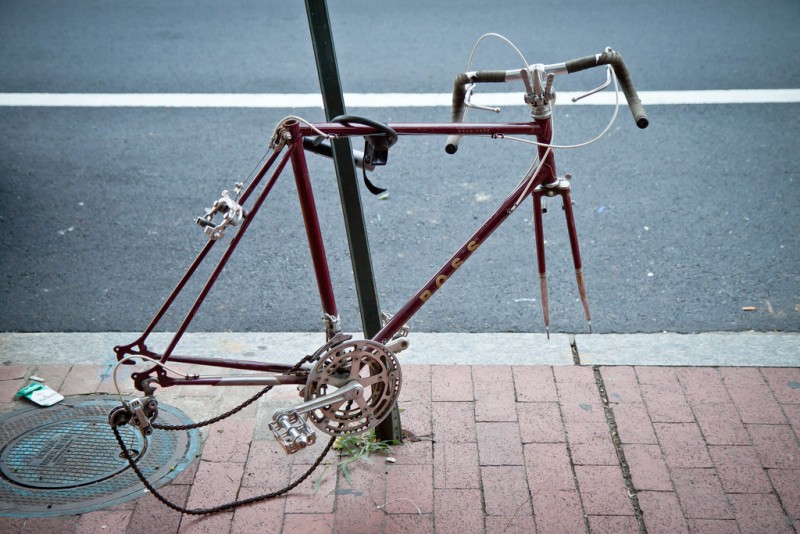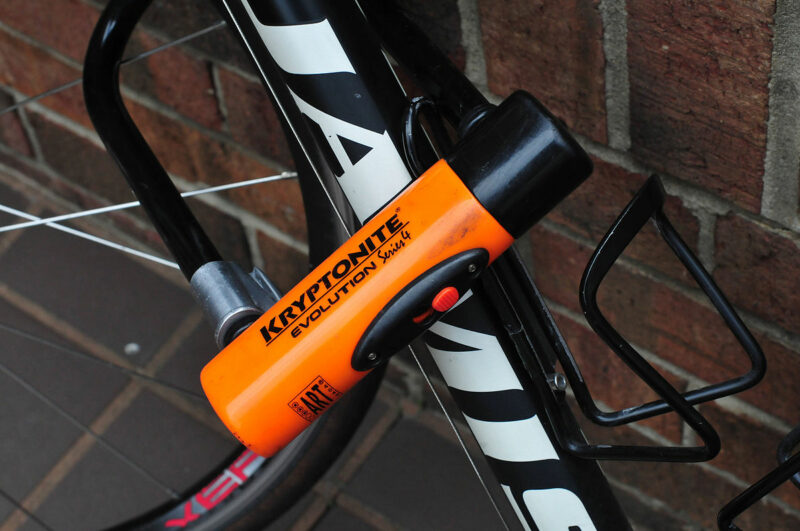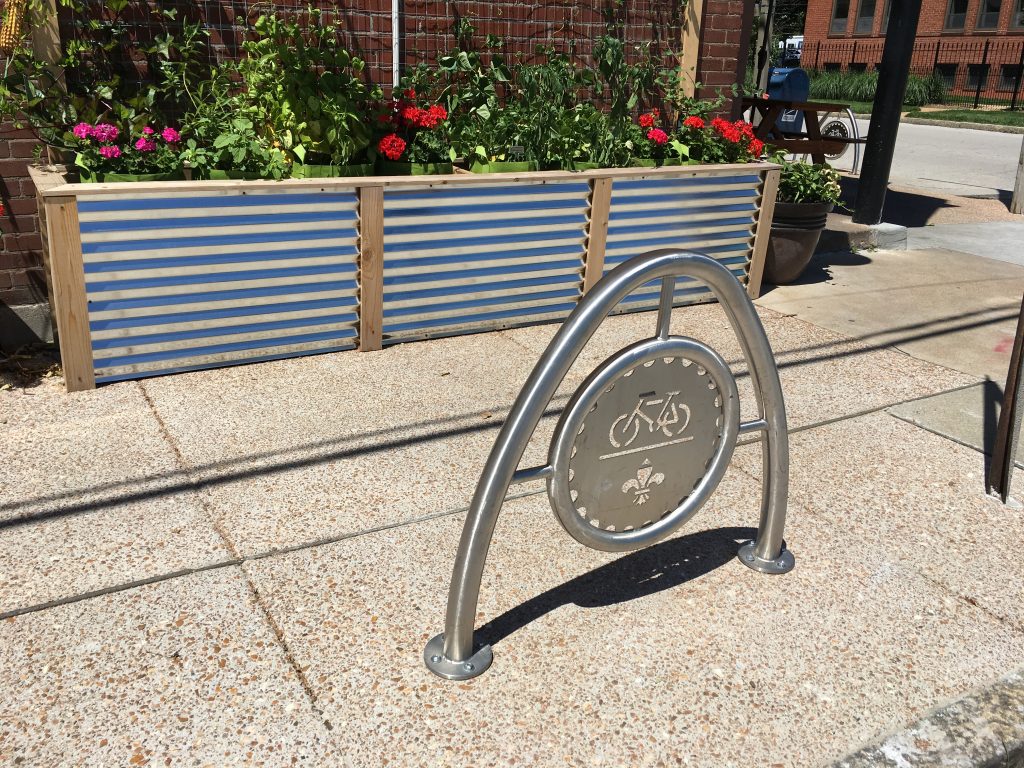5 Steps to Dealing with Bike Theft
Bicycle theft is a problem in the City of San Diego, but with a few easy steps you can lower the chances of someone making off with your bicycle and increase the opportunity to have your stolen bike safely returned to its rightful owner.


Step 1: Register Your Bicycle
Bike Index Registration is free! Just fill out the form below!
Be sure to include all the information about your bicycle(s), including, but not limited to: serial number, year, manufacturer, make, model, color(s) and any distinguishing characteristics. When registering your bicycle, include several images (i.e. front, left side, right side, rear, above, details, etc.).
Keep your registration(s) updated with new information (i.e. new wheels, additional accessories, etc.) and pictures.
If your bicycle is stolen, you are able to designate it as stolen. This will allow any would-be buyer to check Bike Index and find that it is stolen property.
In Addition To Registering your Bike, You Can:
-
Keep A File of your Bicycle
Include a record of information including: original receipt of purchase, serial number, year, manufacturer, make, model, color(s) and any distinguishing characteristics.
-
Save Photos of your Bicyle
These images will be useful when it becomes necessary to describe your bicycle to authorities and spread the word around the neighborhood. If possible, ensure one or more of these images include a picture of you with your bicycle.
Step 2: Get a Great Bicycle Lock
Select and use a high-quality lock. Select a bicycle lock that protects your bicycle and is easy to use on a regular basis. Consider the level of security, the type of lock and the brand when selecting a bicycle lock. Quality locks are expensive, but they are worth the investment.
There are a variety of resources to review when considering the best bicycle lock for you and your ride:

Once you’ve selected your bicycle lock - use it! Be sure to ensure your bicycle lock remains in good working condition and apply lubricant to the keyhole (if applicable) and lock mechanism on a regular basis.
In addition to securing your bicycle with a proper lock, consider:
-
Locking It Up Again
Consider using a second bicycle lock whether it be a U-lock, chain or cable.
-
Locking It All Up
Utilize locking skewers to secure the wheels to the frame. Secure the bike seat to the frame with an additional bicycle lock (chain or cable).
-
Taking it With You
Bring your helmet, your bottles, your bags and your lights with you.
Step 3: Place Your Bicycle
Always consider your surroundings when locking your bicycle. When possible, keep your bicycle in view when it is locked. Never leave your bicycle outside overnight. If applicable, be mindful of using shared garages and storage in your apartment complex.
- Use a bike rack. Check to make sure the bike rack is intact before you lock your bicycle. Be sure that your bicycle and lock cannot be lifted over or that bolts can be easily removed.
- Keep it solid. Lock your bicycle to a solid, metal object. Do not lock your bicycle to a fence, tree or wooden railing. Be sure you’ve locked your bicycle so that it is not blocking the sidewalk or curb ramp.
- Check it out. Make sure the bike rack, or whatever your bicycle is locked to, is secure to the ground.
No bike rack? Ask the business owner to submit a request with the City of San Diego. They’re free!
The business owner may submit a request online Request a Bike Rack or send an email to trafficops@sandiego.gov with the following information:
- Name of Business
- Contact Name
- Telephone Number
- Email Address
- Street Address of proposed bike rack location
- Number of bike racks requested
- Any additional information on the rack location details that may be useful for City of San Diego staff evaluation
If there are not enough bike racks available, contact the city to request more.
Step 4: Lock It Safely
(images from sfbike.org)
While no lock can offer complete security, employ a locking strategy that has “layers of security” which make your bicycle less convenient to target.
- Secure the frame and rear wheel directly to the bike rack. No matter what you do - ensure the frame and rear wheel are secured directly to the bike rack. This can include removing the front wheel, securing both wheels and the frame to the bike rack.
- See the images for details:
- Lock it again (and again). Utilize one u-lock for the front wheel and one to secure the rear triangle of your frame and the rear wheel of the bicycle. Make sure the lock encircles the rim of the wheel - and not just the spokes.
Check out Lock Strategy by Sheldon Brown for more information on the best ways to lock up your bicycle.

- Share it. Tell everyone your bicycle was stolen. Okay, maybe not everyone, but if you are a social media user - use it! Share the fact that your bicycle was stolen and the details (i.e. when, where, etc.). If possible, include an image of your bicycle. The more eyes searching for your bicycle, the more likely it will be recovered.
- Stolen Bike San Diego
Step 5: Stolen Anyway
Despite our best efforts, sometimes a thief still makes off with a bicycle. If so, take steps to improve the chance of a reunion with your ride.
- File a police report. Stolen bicycles are often recovered often, but without documentation they cannot be returned to their owners. Police reports also help cities like San Diego understand how to better allocate resources such as installing secure bicycle parking facilities.
- Mark it stolen. If you have not already registered your bicycle on BikeIndex.org, now is the time and mark it stolen. Bike Index will utilize social media to share your stolen bicycle.
- Take a look around. Visit local swap meets, flea markets or pawn shops to look for your bicycle right away. Pawn shops check police registries for stolen bicycles, but there may be a few days after filing a police report for it to show up in the system.
- Kobey’s Swap Meet [Sports Arena Shopping Center]
- South Bay Swap Meet [South Bay Drive-In Theater]
- Santee Swap Meet
- Spring Valley Swap Meet
- Map of San Diego Area Pawn Shops
- Shop around online and search Craigslist, OfferUp, Facebook Marketplace and eBay listings for your bicycle. Set a Google alert or another automated search tool. This can yield results even months after the theft.
If you find your bike we do not recommend confronting the seller yourself. Instead, ask the flea market security or police for assistance, and bring a photo of your bike or your online registration as proof of ownership to reclaim your property. The seller may not be the person who stole your bike originally, but they still have no claim to the property and do not require compensation.

